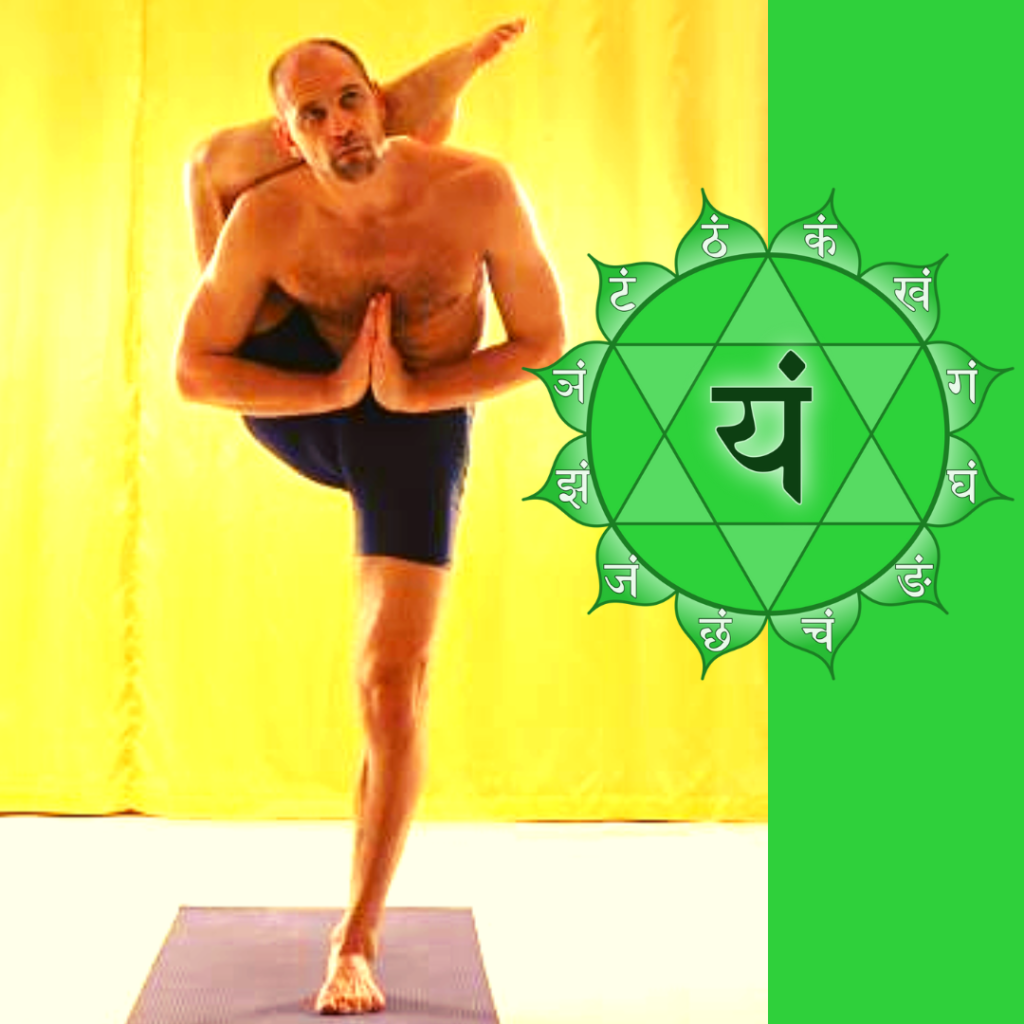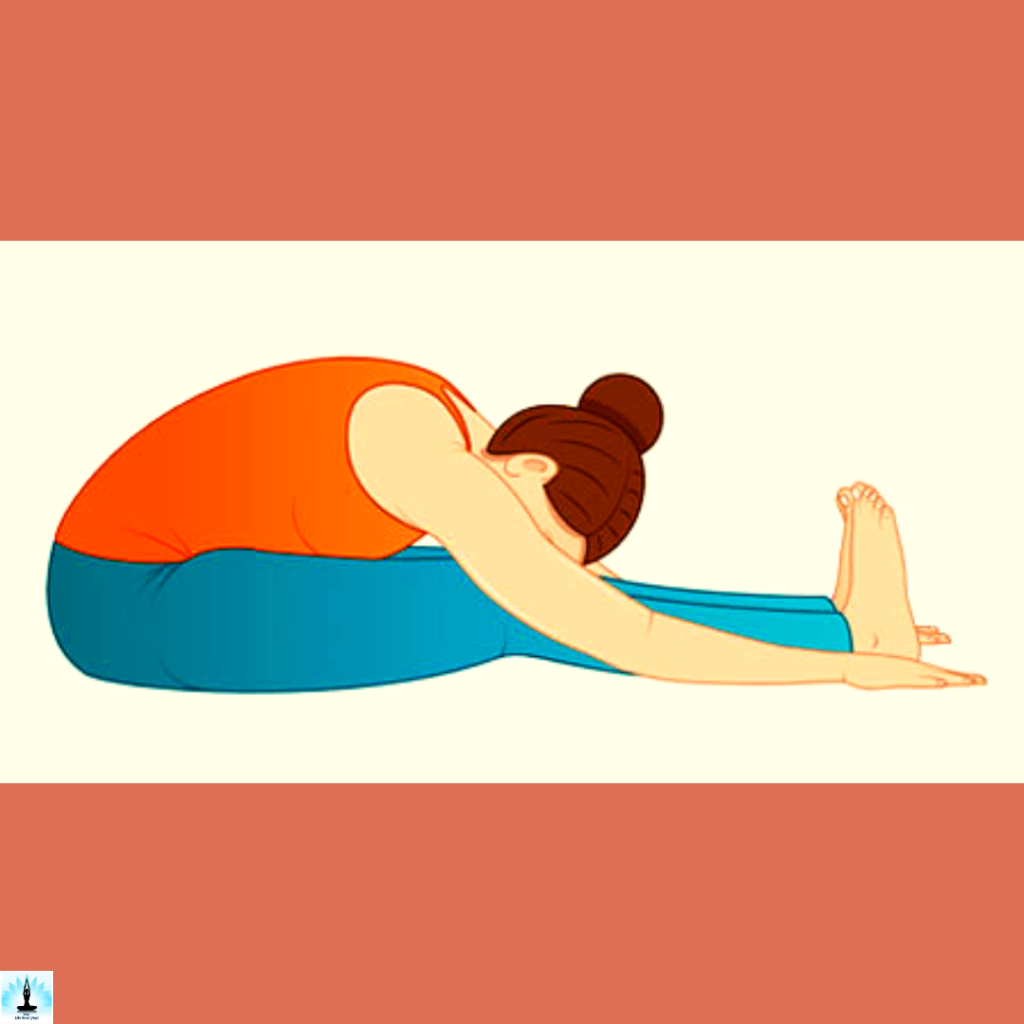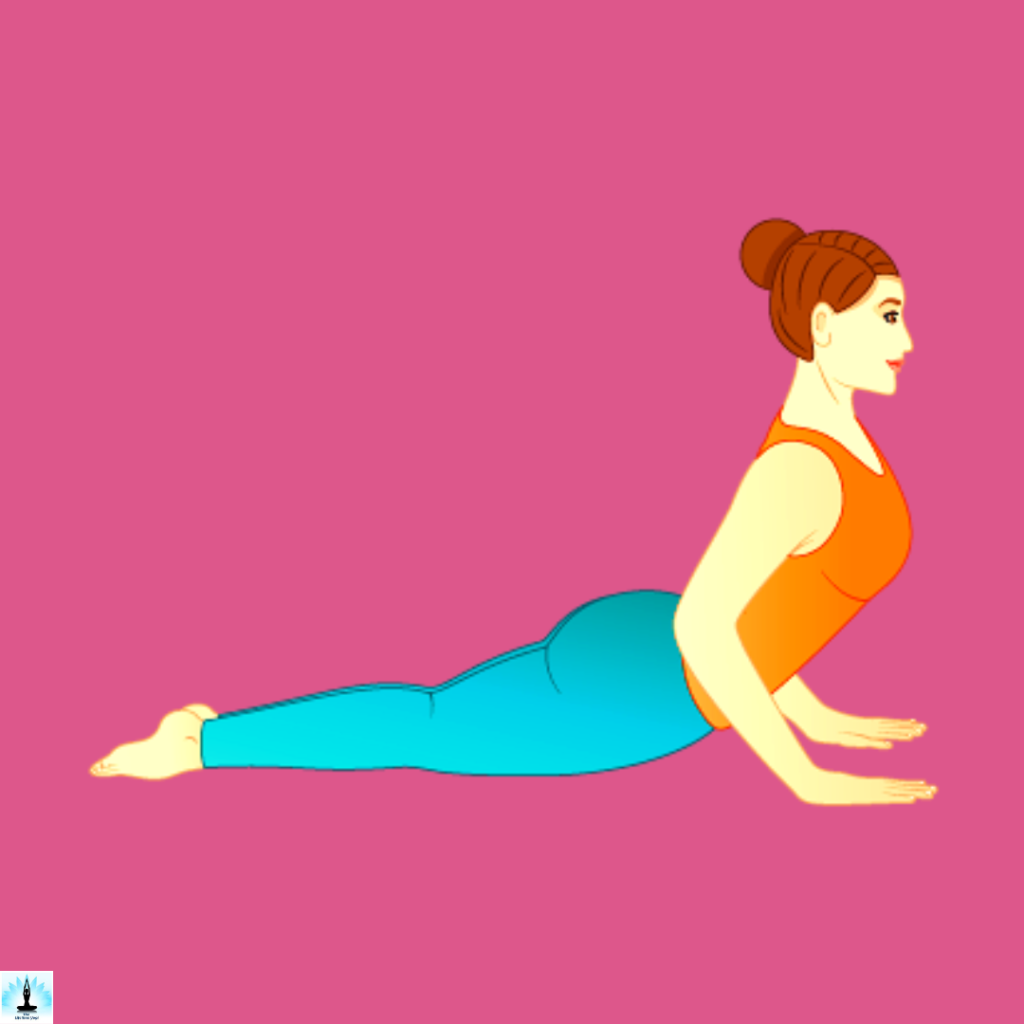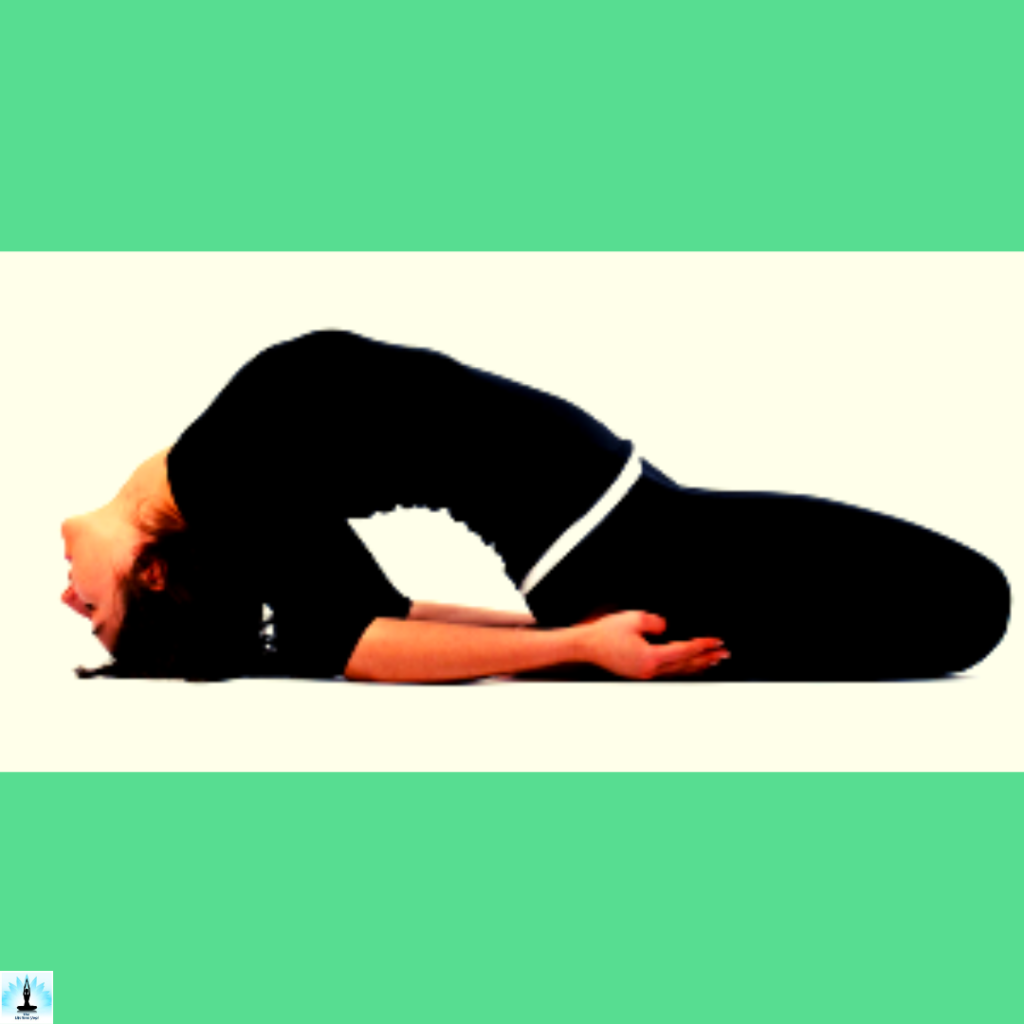Introduction – Top Benefits of Durvasasana (Durvasa Pose) | How to Perform Durvasasana?
Durvasasana, also known as the Sage Durvasa Pose, is an advanced yoga asana that pays homage to the revered sage Durvasa from Hindu mythology. This pose involves a deep backbend with the feet placed over the head, resembling the shape of a wheel. The name “Durvasasana” is derived from the combination of “Durvasa,” the name of the sage known for his fiery temperament, and “Asana,” which means pose. The pose requires significant flexibility in the spine, shoulders, and hips, making it a challenging and invigorating posture.

Table of Contents
The Yogic Philosophy of The Durvasasana
Durvasasana, or Sage Durvasa Pose, represents the yogic philosophy by symbolizing the balance between strength and flexibility. Named after the fiery sage Durvasa, the pose inspires practitioners to nurture resilience and grace in the face of challenges. The deep backbend signifies the ability to bend without breaking, mirroring the sage’s legendary temperament.
Which Chakra is Activated by Practicing Durvasasana?

Located at the center of the chest, the Anahata Chakra is related with love, compassion, balance, and emotional well-being. The deep backbend in Durvasasana opens the chest and heart region, creating a profound stretch across the front body. This activation of the Heart Chakra is thought to facilitate a sense of openness, self-love, and interconnectedness.
Top Benefits of Durvasasana (Durvasa Pose)
Spinal Flexibility:
Durvasasana improves flexibility in the spine, particularly in the thoracic and lumbar regions, enhancing overall spinal mobility.
Shoulder Opening:
The pose opens and stretches the shoulders, releasing tension and improving range of motion in the shoulder joints.
Heart Opening:
Durvasasana is a deep backbend that expands the chest, creating an intense heart-opening effect. This can cultivate a sense of emotional openness and vulnerability.
Respiratory Benefits:
The expansive chest in Durvasasana can improve respiratory function, enhancing lung capacity and promoting deeper, more conscious breathing.
Strengthening Core Muscles:
Holding the pose requires engagement of the core muscles, contributing to abdominal strength and stability.
Improved Posture:
Regular practice of Durvasasana encourages an upright and open posture, counteracting the effects of prolonged sitting and slouching.
Improved Circulation:
The backbend facilitates improved circulation throughout the body, promoting better blood flow and overall cardiovascular health.
Balancing Energies:
The pose is believed to balance the energies within the body, fostering a harmonious flow of prana (life force energy) throughout the subtle energy channels.
Mind-Body Connection:
Durvasasana encourages a profound mind-body connection, as practitioners navigate the physical challenge while cultivating a sense of inner awareness and presence.
How to Perform Durvasasana? | Step-by-Step Instructions of Durvasasana

Starting Position:
Begin in a seated position with your legs extended in front of you. Sit tall and ground both sit bones into the mat.
Bend Knees:
Bend your knees and bring your feet in toward your hips, keeping them hip-width apart. Place your feet firmly on the mat.
Hand Placement:
Position your hands behind your hips with fingers pointing toward your feet. Ensure your palms are flat on the mat, providing a stable foundation.
Lift Hips:
Press into your hands and lift your hips off the mat. Aim to create a straight line from your shoulders to your knees.
Arch Back:
Begin to arch your back, dropping your head back and opening your chest towards the ceiling. Engage your thighs and press through the soles of your feet.
Supportive Head Position:
If comfortable, allow your head to hang back. If not, keep your head in a neutral position or gently release it back.
Straighten Arms:
Gradually work on straightening your arms, lifting your chest higher. Engage your shoulder blades together to open the heart.
Hold and Breathe:
Hold the pose for a few breaths, maintaining steady breathing. Feel the stretch across the chest and the lift in the hips.
Exiting the Pose:
To release, lower your hips back down to the mat with control. Extend your legs and take a moment in a seated position.
Advance Variations of Durvasasana (Durvasa Pose)
Ekahasta Durvasasana (One-Handed Sage Durvasa Pose):

In this advanced variation, practitioners lift one hand off the mat while maintaining the deep backbend of Durvasasana. This variation intensifies the challenge by requiring increased strength and balance on a single arm, adding a dynamic element to the pose.
Therapeutic Applications of Durvasasana (Durvasa Pose)
Durvasasana offers therapeutic benefits by promoting flexibility in the spine, shoulders, and hips. The deep backbend can help alleviate mild back pain and enhance spinal mobility. As the chest opens, the pose may contribute to improved respiratory function and increased lung capacity.
Poses Related to Durvasasana (Durvasa Pose)
Preparatory Poses of Durvasasana
Paschimottanasana (Seated Forward Bend):

Paschimottanasana is an excellent preparatory pose for Durvasasana as it stretches the spine, hamstrings, and shoulders. The forward bend encourages flexibility in the posterior chain and prepares the body for the deep backbend of Durvasasana.
Bhujangasana (Cobra Pose):

Bhujangasana helps warm up the spine, open the chest, and strengthen the back muscles. The extension in the upper back and engagement of the spinal muscles in Cobra Pose contribute to the flexibility needed for the backbend in Durvasasana.
Follow-up Poses of Durvasasana (Durvasa Pose)
Setu Bandhasana (Bridge Pose):

Following Durvasasana, practicing Setu Bandhasana helps to neutralize the spine, release any residual tension, and strengthen the lower back and glutes. The bridge pose complements the backbend of Durvasasana by promoting spinal flexibility and stability.
Matsyasana (Fish Pose):

Matsyasana is an excellent pose to follow Durvasasana as it counteracts the backbend by opening the chest in the opposite direction. This fish pose stretches the chest, throat, and abdomen, providing a balance to the deep heart-opening aspect of Durvasasana.
Beginner’s Tip of Durvasasana (Durvasa Pose)
For beginners approaching Durvasasana, it’s crucial to prioritize gradual progression and alignment. Start with preparatory poses that focus on opening the chest and shoulders, such as bridge pose and camel pose. Utilize props, such as blocks or a bolster, to support the backbend and provide stability. Engage in regular practice to build the necessary strength and flexibility for deeper expressions of the pose.
Contraindications and Cautions of Durvasasana (Durvasa Pose)
Those with back issues, such as herniated discs or spinal injuries, should avoid or modify the pose. Individuals with shoulder, neck, or hip injuries should exercise caution and consider adapting the pose to suit their limitations. Pregnant women are advised to avoid deep backbends, and individuals with high blood pressure should practice with care.
FAQ’s on Durvasasana (Durvasa Pose)
Q: Is Durvasasana Suitable for Beginners?
A: Durvasasana is an advanced yoga pose that requires significant flexibility and strength. Beginners are advised to approach this pose gradually, focusing on preparatory poses and seeking guidance from an experienced instructor.
Q: Can Durvasasana Help with Back Pain?
A: Durvasasana can contribute to spinal flexibility, which may be beneficial for mild back discomfort. However, individuals with existing back issues should approach this pose with caution and consult a healthcare professional or yoga instructor for personalized advice.
Q: How Often Should One Practice Durvasasana?
A: The frequency of practicing Durvasasana depends on an individual’s level of experience, flexibility, and overall fitness. It is recommended to practice under the guidance of a qualified instructor and incorporate the pose into a well-rounded yoga routine.
Q: Are There Variations of Durvasasana for Different Levels?
A: Yes, there are variations of Durvasasana that cater to different levels of practitioners. Beginners may start with modified versions and gradually progress to more advanced variations as their strength and flexibility improve.
Q: Can Durvasasana Improve Posture?
A: Durvasasana helps open the chest and encourages an upright posture. Regular practice, along with a focus on alignment, can contribute to improved posture by strengthening the back muscles and promoting awareness of body alignment.
Q: Is Durvasasana Suitable for Individuals with Shoulder Issues?
A: Individuals with shoulder issues should approach Durvasasana with caution. Modifications and props may be necessary to adapt the pose to accommodate shoulder limitations. Consulting with a healthcare professional or yoga instructor is advisable.
Q: Can Durvasasana Be Practiced During Pregnancy?
A: Pregnant women are generally advised to avoid deep backbends like Durvasasana. It is crucial to prioritize poses that are safe during pregnancy and consult with a healthcare provider for guidance on suitable yoga practices.
Q: How Can One Deepen Their Durvasasana Practice?
A: Deepening Durvasasana involves consistent practice, gradual progression, and a focus on building strength and flexibility. Incorporating complementary poses and seeking guidance from a knowledgeable instructor can aid in deepening the practice.
Q: What Precautions Should Be Taken During Durvasasana?
A: Individuals with neck, back, or shoulder issues, as well as those with high blood pressure, should exercise caution and consider modifications. It is advisable to warm up adequately, practice with awareness, and avoid forcing the body into the pose.
Q: Can Durvasasana Be Part of a Therapeutic Practice?
A: Durvasasana can have therapeutic benefits, particularly for improving spinal flexibility and promoting emotional well-being. However, it should be approached mindfully, and individuals with specific therapeutic goals should consult with a healthcare professional or experienced yoga therapist.
Conclusion
In conclusion, Durvasasana, the Sage Durvasa Pose, stands as a testament to the profound synergy of strength, flexibility, and emotional openness within the realm of yoga. Named after the fiery sage Durvasa, this advanced asana challenges practitioners to embody resilience and grace while navigating the intricacies of a deep backbend. As the chest opens and the spine arches gracefully, Durvasasana symbolizes the delicate balance between physical prowess and spiritual surrender.
References
- Mallinson, James; Singleton, Mark (2017). Roots of Yoga. Penguin Books. p. 125. ISBN 978-0-241-25304-5. OCLC 928480104.
- Sjoman 1999, p. 78, plate 11 (pose 62).
- Iyengar 1979, pp. 296–299.
- Sjoman 1999, p. 69.
- Self, Philip (1998). Yogi bare : naked truth from America’s leading yoga teachers. Nashville, Tenn: Cypress Moon Press. p. 291. ISBN 978-0-9666894-0-2. OCLC 42077034.
